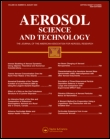
AEROSOL SCIENCE AND TECHNOLOGY
Scope & Guideline
Bridging the Gap Between Theory and Practice in Aerosol Technology
Introduction
Aims and Scopes
- Aerosol Physics and Dynamics:
Research in this area covers the fundamental physical properties of aerosols, including their formation, transport, and deposition mechanisms. It often utilizes computational fluid dynamics (CFD) and experimental techniques to study the behavior of aerosol particles in various environments. - Health and Environmental Impacts of Aerosols:
This scope encompasses studies on the effects of aerosols on human health, particularly in relation to respiratory diseases and infections. It also includes research on how aerosols influence environmental quality and climate, addressing issues like air pollution and global warming. - Instrumentation and Measurement Techniques:
The journal features advancements in aerosol measurement technologies, including developments in particle sizing, concentration measurements, and chemical composition analysis. This area is critical for accurate monitoring and regulation of aerosol emissions. - Chemical and Physical Characterization of Aerosols:
Papers often focus on the chemical composition and physical properties of aerosol particles, including studies on organic and inorganic components, hygroscopicity, and the interactions between aerosols and gases in the atmosphere. - Modeling and Simulation of Aerosol Behavior:
Research involving mathematical modeling and simulations of aerosol dynamics, including nucleation processes, growth mechanisms, and interactions with meteorological factors, is a consistent theme.
Trending and Emerging
- Aerosols and Infectious Diseases:
There has been a significant increase in research related to aerosols and their role in the transmission of infectious diseases, especially in light of the COVID-19 pandemic. This includes studies on aerosol generation, dispersion, and mitigation strategies in indoor environments. - Climate Change and Aerosol Interactions:
Emerging studies focus on the interactions between aerosols and climate change, particularly how aerosols impact cloud formation and radiative forcing. This trend reflects a growing recognition of aerosols' role in the Earth's climate system. - Advanced Measurement and Analysis Techniques:
The development and integration of novel measurement technologies, such as real-time monitoring and machine learning approaches for aerosol analysis, are gaining traction, allowing for more accurate and comprehensive studies of aerosol properties. - Impact of Urbanization on Aerosol Dynamics:
Research is increasingly addressing the effects of urbanization on aerosol characteristics and behavior, including the influence of urban emissions on air quality and health outcomes. - Aerosol Mitigation Technologies:
A growing body of work is focused on developing and evaluating technologies aimed at reducing aerosol emissions and exposure, such as air purification systems and effective mask designs.
Declining or Waning
- Traditional Industrial Aerosol Applications:
Research focused on industrial applications of aerosols, such as those in manufacturing processes or traditional combustion systems, has seen a decline as the field shifts towards more pressing health and environmental concerns, particularly in the wake of the COVID-19 pandemic. - Aerosol Studies in Non-Atmospheric Contexts:
There seems to be a reduction in studies examining aerosols in non-atmospheric conditions, such as those related to laboratory settings or controlled environments, as interest grows in real-world applications and implications for public health. - Niche Measurement Techniques:
Certain specialized aerosol measurement techniques that were once prevalent appear to be decreasing in frequency as more effective and efficient methods are developed, leading to a preference for widely applicable technologies.
Similar Journals

Journal of Korean Society for Atmospheric Environment
Unveiling insights into air quality and pollution science.Journal of Korean Society for Atmospheric Environment is a leading platform for innovative research in the fields of environmental chemistry, engineering, and pollution science. Published by the Korean Society for Atmospheric Environment, this journal is dedicated to disseminating high-quality research findings that address the crucial challenges of atmospheric environment management and sustainability. The journal operates from South Korea and features a diverse range of articles exploring contemporary environmental issues, including air quality assessment and pollutant impact studies. Although it is not an open-access journal, it maintains a notable presence in the academic community with its categorization in Q3 in Environmental Engineering and Q4 in Environmental Chemistry, as of 2023. With its focus on interdisciplinary research, the Journal of Korean Society for Atmospheric Environment serves as an essential resource for researchers, professionals, and students interested in advancing knowledge and practices related to atmospheric environmental sciences.
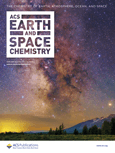
ACS Earth and Space Chemistry
Advancing Knowledge at the Intersection of Earth and SpaceACS Earth and Space Chemistry is a leading journal published by the American Chemical Society, dedicated to advancing the interdisciplinary fields of atmospheric science, geochemistry, and planetary science. Since its inception in 2017, this journal has quickly established itself as a pivotal resource for researchers and professionals, boasting an impressive impact factor and securing its position in Q2 of the Scopus rankings for 2023 across its relevant categories. The journal publishes cutting-edge research articles, reviews, and commentaries that explore the chemical processes influencing Earth and space environments. By providing open access to invaluable research from experts around the globe, it encourages collaboration and dissemination of knowledge, crucial for addressing pressing environmental and planetary challenges. Situated in the heart of Washington, D.C., the journal's editorial office works diligently to ensure rigorous peer review and high-quality publications that meet the needs of its diverse audience, including scholars and students keen to stay abreast of developments in these dynamic fields.

ATOMIZATION AND SPRAYS
Connecting Researchers in Fluid Mechanics and BeyondATOMIZATION AND SPRAYS, published by BEGELL HOUSE INC, stands at the forefront of research in the dynamic field of chemical engineering, particularly focusing on the intricate processes of atomization and the mechanics of droplet dynamics. Established in 1996, this prestigious journal aims to disseminate innovative findings and methodologies that drive advancements in applications ranging from spray technologies in industrial processes to environmental technology and energy conversion systems. With a current Impact Factor that reflects its significance within the community—ranked in the Q3 quartile—it serves as a comprehensive resource for researchers, professionals, and students eager to deepen their understanding of fluid mechanics and spray applications. Though not an open-access publication, it provides critical insights and a platform for scholarly communication and exchange in its converged years, fostering collaboration and innovation within the domain.
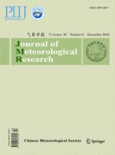
Journal of Meteorological Research
Unlocking the Secrets of Our Changing Climate.The Journal of Meteorological Research, published by SPRINGER HEIDELBERG, stands as a vital resource in the fields of Atmospheric Science and Ocean Engineering, boasting an impressive impact factor that reflects its scholarly significance. With its ISSN 2095-6037 and E-ISSN 2198-0934, the journal offers an open access platform, fostering accessibility and dissemination of cutting-edge research. Established in 2014 and running through to 2024, it is particularly distinguished in 2023 as Q2 in Atmospheric Science and Q1 in Ocean Engineering, underscoring its important contributions to these disciplines, with remarkable rankings in Scopus that place it in the top tiers of both categories. The journal accepts a broad range of research articles, reviews, and innovative methodologies, catering to a diverse audience of researchers, professionals, and students eager to advance their knowledge and expertise in meteorological studies. This makes the Journal of Meteorological Research an essential platform for anyone engaged in understanding and addressing the complex challenges of our changing climate.
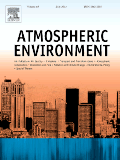
ATMOSPHERIC ENVIRONMENT
Connecting disciplines to enhance our understanding of the atmosphere.ATMOSPHERIC ENVIRONMENT is a premier journal dedicated to advancing the field of atmospheric science and environmental studies, published by Pergamon-Elsevier Science Ltd in the United Kingdom. With an impressive impact factor and recent rankings placing it in the Q2 quartile for Atmospheric Science and Q1 for miscellaneous Environmental Science, it stands as a leading source of high-quality research articles that bridge the gap between atmospheric phenomena and environmental issues. The journal, which has been disseminating significant findings since its inception in 1972, emphasizes an interdisciplinary approach, inviting contributions that address the pivotal challenges facing our atmosphere today. Although it does not currently offer open access options, the journal remains accessible through various academic platforms, ensuring that the latest research reaches its vast audience of researchers, professionals, and students who are striving to deepen their understanding of atmospheric processes. With a robust scope that encompasses a range of topics from climate change to air quality management, ATMOSPHERIC ENVIRONMENT is essential reading for anyone committed to fostering sustainable environmental practices and innovative scientific research.
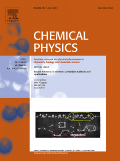
CHEMICAL PHYSICS
Unveiling Chemical Phenomena Through Innovative Research.CHEMICAL PHYSICS is a premier international journal published by Elsevier, dedicated to advancing the field of theoretical and experimental chemistry, particularly within the physical domain. Since its inception in 1973, this journal has served as a platform for disseminating cutting-edge research, fostering collaboration among researchers and professionals in the community. With a notable impact factor and recognized in the Scopus rankings, CHEMICAL PHYSICS holds esteemed positions in two categories: Q3 in Physical and Theoretical Chemistry and Q2 in Physics and Astronomy (miscellaneous). Published in the Netherlands, the journal features high-quality articles that cover a broad spectrum of topics, aiming to deepen understanding of chemical phenomena through innovative approaches. Although open access options are not currently available, the journal remains invaluable for researchers, students, and professionals seeking to stay informed about the latest developments in chemical physics. With convergence years extending from 1973 to 2025, CHEMICAL PHYSICS continues to be a significant contributor to the academic discourse in its field.

ADVANCES IN ATMOSPHERIC SCIENCES
Connecting Scholars to Address Atmospheric ChallengesADVANCES IN ATMOSPHERIC SCIENCES is a highly esteemed journal published by SCIENCE PRESS, dedicated to advancing the field of atmospheric sciences. With an impressive impact factor and ranking as Q1 in Atmospheric Science as of 2023, this journal serves as a leading platform for researchers, professionals, and students to disseminate substantial findings and innovative methodologies across various topics within the atmospheric sciences domain. Established in 1984 and continuously publishing through to 2024, it has successfully positioned itself among the top ranks, currently standing at #17 out of 148 in the Scopus category, highlighting its significance in the field with a remarkable 88th percentile. Although it operates under traditional access, the journal provides invaluable insights into climate dynamics, meteorology, and environmental processes that are crucial for both academic and practical applications. Based in Beijing, China, ADVANCES IN ATMOSPHERIC SCIENCES is committed to fostering a global dialogue and collaboration among scholars and industry experts, making it an essential resource for those invested in understanding and addressing contemporary atmospheric challenges.

International Journal of Environmental Science and Technology
Leading the charge in sustainable technology research.International Journal of Environmental Science and Technology, published by SPRINGER, stands as a premier platform for the dissemination of cutting-edge research in the fields of environmental science, technology, and engineering. With an impressive scope spanning from 2005 to 2024, this journal serves as a vital resource for academic and professional communities engaged in tackling pressing environmental challenges. It boasts a strong reputation, evidenced by its Q1 ranking in Agricultural and Biological Sciences and solid placements in Environmental Chemistry and Engineering. Researchers searching for high-impact studies will find the journal's contributions significant, as reflected in its rankings within Scopus: 34th percentile in Agricultural and Biological Sciences and notable standings in Environmental Engineering and Chemistry. Although the journal is not currently an Open Access resource, it maintains a commitment to academic rigor and innovation, making it indispensable for those devoted to advancing knowledge in environmental sustainability and technology.

Environmental Science-Atmospheres
Empowering researchers to tackle global environmental challenges.Environmental Science-Atmospheres is an emerging and dynamic open-access journal published by the Royal Society of Chemistry, dedicated to advancing research in the fields of environmental science and atmosphere-related studies. Launched in 2021, this journal serves as an essential platform for disseminating cutting-edge findings that address the complexities of atmospheric phenomena, pollution impacts, and overall environmental health. With a commendable Q2 ranking across various categories including Environmental Chemistry and Pollution, it solidifies its position as a vital resource for researchers, professionals, and students seeking to contribute to the understanding of environmental dynamics. The journal is indexed in Scopus, providing its contributors with significant visibility within the scientific community. Operating under a fully Open Access model since its inception, Environmental Science-Atmospheres ensures that research outputs are freely accessible, fostering collaboration and knowledge sharing essential for tackling global environmental challenges.

Experimental and Computational Multiphase Flow
Unlocking the Secrets of Fluid DynamicsExperimental and Computational Multiphase Flow, published by SpringerNature, is a prestigious academic journal that critically examines advancements in the field of fluid dynamics, with a specialized focus on multiphase flow phenomena. Since its inception in 2019, the journal has established a remarkable reputation, attaining Q1 status in Fluid Flow and Transfer Processes as well as Mechanical Engineering according to the 2023 category quartiles, reflecting its high impact and relevance in these domains. With Scopus rankings placing it among the top 15 journals in both Chemical Engineering and Nuclear Energy and Engineering, Experimental and Computational Multiphase Flow is an essential resource for researchers, professionals, and students engaged in cutting-edge studies and applications. Although it operates on a subscription model, the journal remains dedicated to disseminating high-quality research and fostering a deeper understanding of complex fluid interactions across various scientific disciplines. By prioritizing innovative methodologies and interdisciplinary collaborations, the journal aims to significantly contribute to the ongoing evolution of multiphase flow research, recognizing its critical importance in engineering and energy sectors.